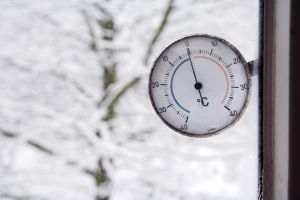
Source: Junos / Getty
The Triangle is under a Wind Chill alert, as below-freezing temperatures continue here’s a friendly reminder to take extra precautions when spending any time outdoors, and to know the signs of hypothermia and frostbite. Cold injuries are usually due to prolonged exposure to cold temperatures, although they can occur with brief exposure to extremely cold conditions. They occur because our body’s ability to generate heat and to limit heat loss is quite limited.
Warning sings of hypothermia
*Shivering, numbness, glassy stare, apathy, weakness, impaired judgment,loss of consciousness.
What to do for hypothermia—
* CALL 9-1-1 or the local emergency number.
* Gently move the person to a warm place.
* Monitor breathing and circulation.
* Give rescue breathing and CPR if needed.
* Remove any wet clothing and dry the person.
* Warm the person slowly by wrapping in blankets or by putting dry clothing on the person. Hot water
bottles and chemical hot packs may be used when first wrapped in a towel or blanket before applying. Do
not warm the person too quickly, such as by immersing him or her in warm water. Rapid warming may
cause dangerous heart arrhythmias. Warm the core first (trunk, abdomen), not the extremities (hands,
feet). This is important to mention because most people will try to warm hands and feet first and that can cause shock.
Warning signs of Frostbite-
*The freezing of a specific body part such as fingers, toes, the nose or earlobes.
*Signals of frostbite include—lack of feeling in the affected area; skin that appears waxy, is cold to the touch, or is discolored (flushed, white or gray, yellow or blue).
What to do for frostbite—
* Move the person to a warm place.
* Handle the area gently; never rub the affected area.
* Warm gently by soaking the affected area in warm water (100–105 degrees F) until it appears red and
feels warm.
* Loosely bandage the area with dry, sterile dressings.
* If the person’s fingers or toes are frostbitten, place dry, sterile gauze between them to keep them
separated.
* Avoid breaking any blisters.
* Do not allow the affected area to refreeze.
* Seek professional medical care as soon as possible.
Source: American Red Cross
More News:
Teachers In Baltimore Say Their Classrooms Don’t Have Heat, Students Learning In Coats















